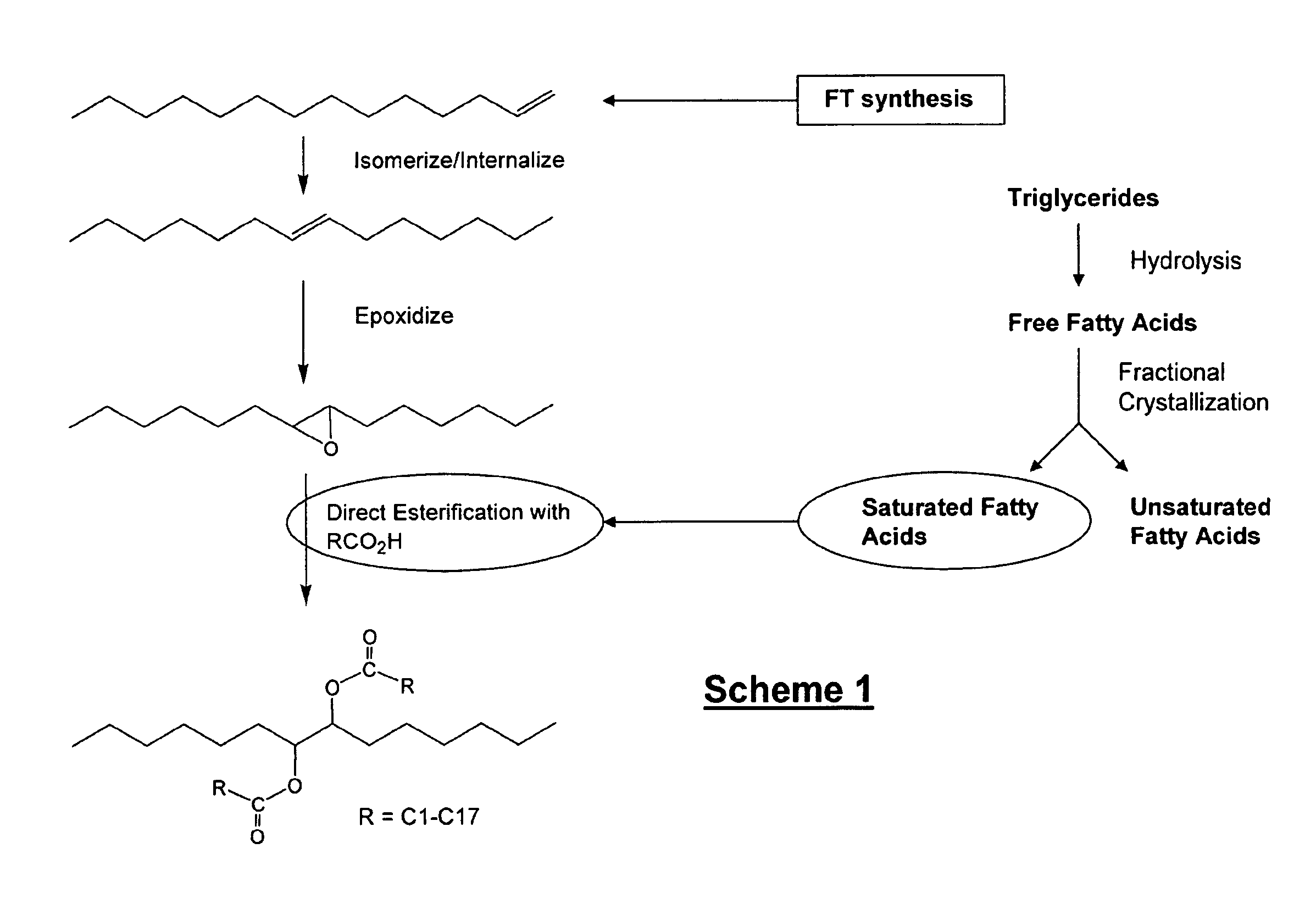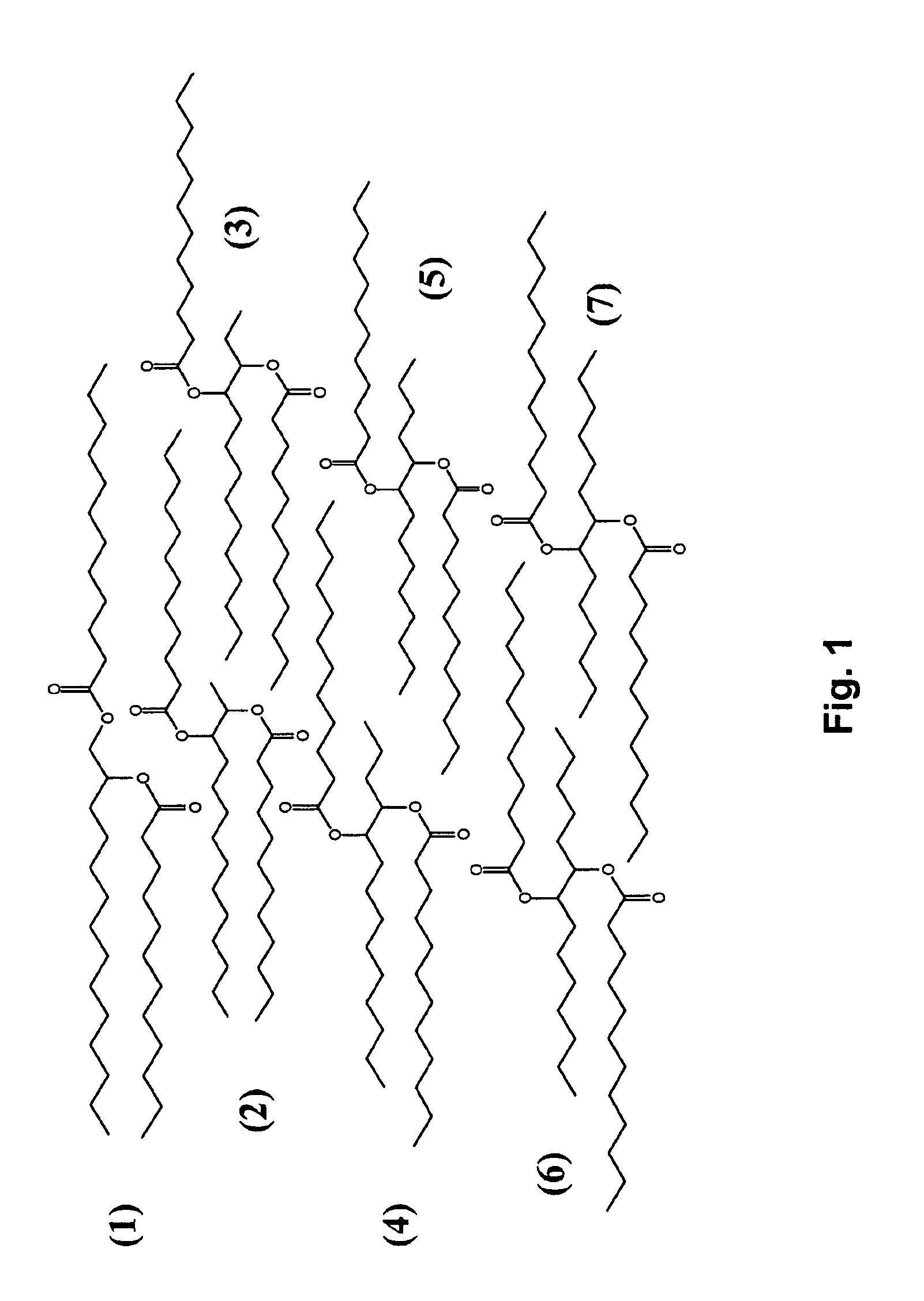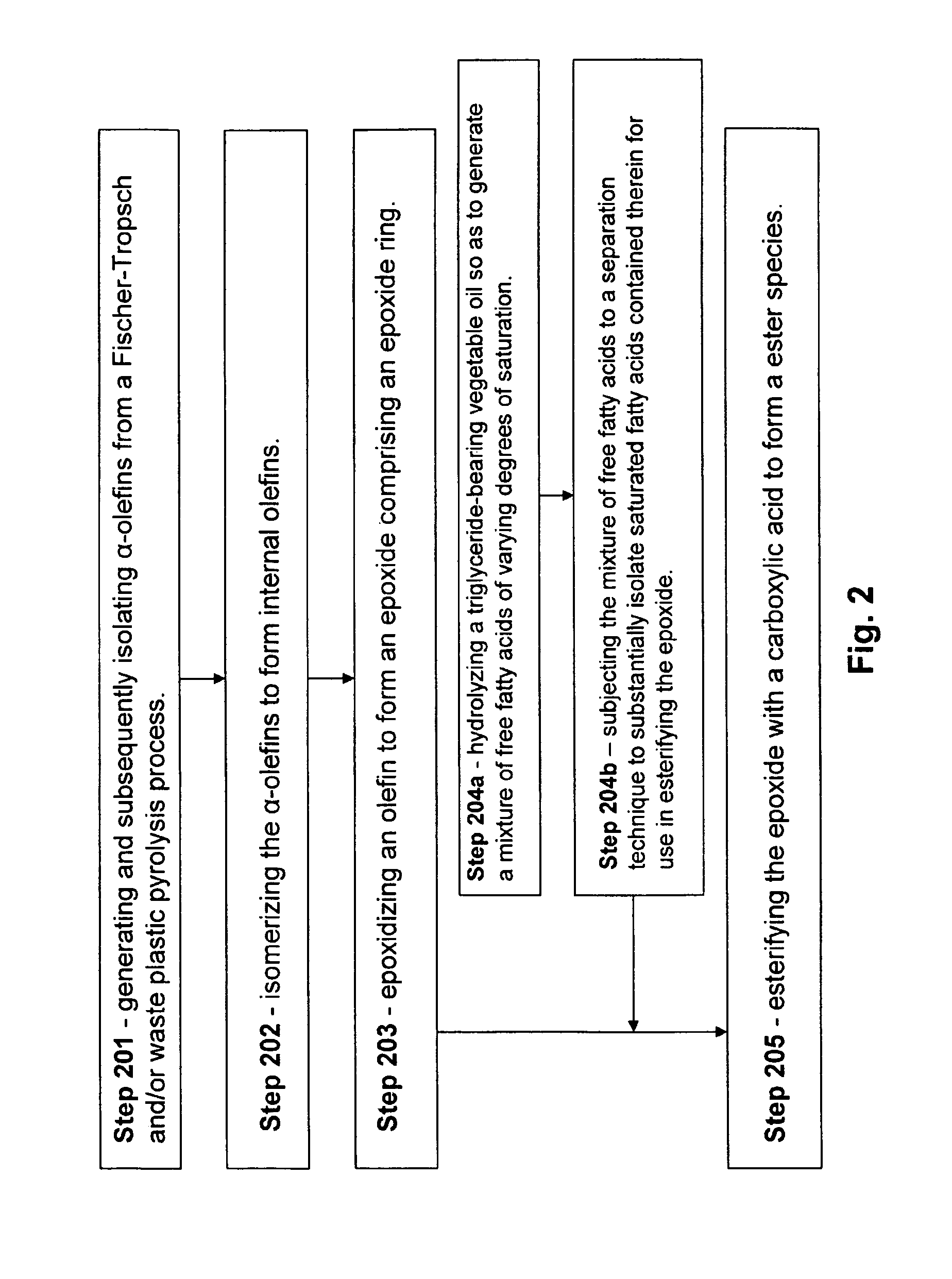Isolation and subsequent utilization of saturated fatty acids and α-olefins in the production of ester-based biolubricants
- Summary
- Abstract
- Description
- Claims
- Application Information
AI Technical Summary
Benefits of technology
Problems solved by technology
Method used
Image
Examples
example 1
[0060]This Example serves to illustrate the direct esterification of 1-dodecene epoxide (2-decyl-oxirane) to yield a diester species, in accordance with some embodiments of the present invention.
[0061]Quantities of 1-dodecene epoxide (9.2 grams, 50 mmol) and octanoic acid (14.4 grams, 100 mmol) were dissolved in 12 mL toluene, and 85% H3PO4 (0.3 grams, 0.87 mmol) was added. The mixture was stirred and bubbled / purged with nitrogen at 140° C. for 23 hours. The mixture was subsequently washed with a K2CO3-saturated solution, filtered and separated to remove the acids, the organic layer was dried by anhydrous MgSO4 and evaporated under reduced pressure. Referring to FIG. 6, the diester product 8, octanoic acid 2-octanoyloxy-dodecyl ester, (18 grams, 83% yield) was a transparent, colorless oil.
example 2
[0062]This Example serves to illustrate synthesis and isolation of a diol, and subsequent esterification of said diol, en route to synthesis of a diester species, in accordance with some embodiments of the present invention.
Diol Preparation and Isolation
[0063]In a 3-neck 1 mL reaction flask equipped with an overhead stirrer and an ice bath, 75 mL of 30% hydrogen peroxide were added to 300 mL of 96% formic acid. To this mixture, 100 grams (0.51 mole) of 7-tetradecene (purchased from Aldrich Chemical Co.) was added slowly over a 30 minute period via a dropping funnel. Once the addition of the olefin was complete, the reaction was allowed to stir while cooling with the ice-bath to prevent rise in the temperature above 40-50° C. for 2 hrs. The ice-bath was then removed and the reaction was stirred at room temperature overnight. The reaction mixture was concentrated with a rotary evaporator in a hot water bath at ˜30 torr to remove most of the water and formic acid. Then, 100 mL of ice-c...
PUM
 Login to View More
Login to View More Abstract
Description
Claims
Application Information
 Login to View More
Login to View More - R&D
- Intellectual Property
- Life Sciences
- Materials
- Tech Scout
- Unparalleled Data Quality
- Higher Quality Content
- 60% Fewer Hallucinations
Browse by: Latest US Patents, China's latest patents, Technical Efficacy Thesaurus, Application Domain, Technology Topic, Popular Technical Reports.
© 2025 PatSnap. All rights reserved.Legal|Privacy policy|Modern Slavery Act Transparency Statement|Sitemap|About US| Contact US: help@patsnap.com



